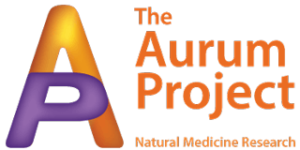Resolving Trauma: Somatic and homeopathic approaches

My mother trained in social work during the 1940’s. I recall being shocked when she told me, with great authority and conviction, that children who experience trauma in their early years had no hope of recovery that the damage that is done at this tender age cannot be repaired. Fortunately, times have changed. We have learned much about the human brain, about subtleties of human physiology, and deepened our understanding of human psychology. This paper will explore some of the current research into the neuroscience of trauma, and different treatment strategies that are being used to help resolve trauma. It is what resonates for me.
- The role of the so-called immobility or freeze response as a trauma response.
- Somatic approaches to trauma resolution which focus on the felt sense, the physiological sensations experienced in the body.
- The importance of developing self-compassion as an adjunct to healing.
- the role of homeopathic treatment in supporting resolving trauma.
First though, what exactly is trauma?
The best definition I could find is from the Australian Childhood Foundation website: Trauma is the emotional, psychological, and physiological residue leftover from heightened stress that accompanies experiences of threat, violence, and life-challenging events.
Trauma is not an event as such; it is the response to an overwhelming event. The trauma response is a survival strategy mediated by the autonomic nervous system. When we are overwhelmed during a threatening situation, what we can’t process at the time gets locked into our nervous system. The body continues to tell the brain that there is threat, long after the danger has passed. Healing involves gently supporting the release of this stuck energy.
Trauma is subjective and very individual. Two people who experience the same event may have very different responses. The event that produces trauma can be as simple as a fall or a minor surgical procedure. At the other extreme there can be physical, sexual, or coercive abuse, war, terrorism, or any other act of violence. Trauma can arise from an isolated incident such as an accident, bushfire, rape, or physical assault in adulthood. Then there is what is termed complex trauma, when someone is exposed to multiple traumas, such as childhood sexual abuse, relationship abuse, the effects of war, or being a refugee or asylum seeker. Trauma can also be experienced vicariously by those working in the field of victim services, emergency services etc, the outcome from being repeatedly exposed to other peoples’ experience of traumatic events. A person can experience trauma from undergoing a challenging experience or from witnessing one.
What then are some of the symptoms?
Mentally a person can experience
- Difficulty concentrating
- Confusion
- Disorientation
- Excessive worry
- Intrusive thoughts and images
Emotionally there can be:
- Shock
- Numbness
- Sadness and grief
- Irritability and anger
- Fear
- Guilt and shame
Physiological impacts can include:
- Feeling keyed up and on edge
- Aches and pains
- Headaches
- Difficulty sleeping
- Fatigues
And behaviourally a person can experience:
- Withdrawal
- Avoidance of trauma reminders
- Conflict with others
- Risk-taking behaviours
- Substance abuse.
Panic attacks, which are one expression of trauma, incorporate symptoms from many different areas.
Another way of looking at symptoms is to categorise trauma reactions:
- Hyperarousal
- Increased HR
- Breathing difficulty
- Cold sweat
- Tingling
- Muscular tension
- Mind racing
- Constriction
- Body tenses to fight or flee -> muscle tension
- Breathing constriction
- Dissociation and denial
- In threat, we get cut off from the fear and pain as a survival strategy
- Helplessness, Immobility & Freezing
- This is the nervous system ‘brake’
What is going on in the body and the human brain when we have a traumatic experience?
The brain instinctively reacts to situations of perceived threat by defaulting to survival mode. Centres in the reptilian brain or limbic system are activated. The reactions are autonomic, in other words, involuntary.
The first level of default is the sympathetic nervous system, which mediates mobilisation, more commonly described as fight or flight. The amygdala centre at the base of the brain stimulates the release of cortisol and adrenaline which enables us to either attack with ferocity or run like we have never run before. We become capable of performing feats way beyond our normal capacity. Think of the stories of a grandmother lifting a car that has run over her infant grandchild.
In situations where neither fight or flight are an option, the body can revert to a more ancient autonomic response, which is described as the freeze or immobilisation response. Yet while the body appears to be frozen in immobility, under the surface the nervous system is ‘buzzing’. It’s like having one foot pressed down hard on the accelerator of the car with the other pressed flat on the brake. Internally there is a state of hyperarousal.
When the immediate threat has passed, animals are usually able to discharge this nervous energy, maybe with shaking and trembling, or a surge of energy. In humans, the higher brain centres of the neocortex tend to override or interfere with the innate ability to complete this arousal cycle, to discharge the energy. We get stuck. Symptoms a traumatised person experiences can reflect the effort it takes to hold that trapped energy in. In a simple scenario, if I trip and fall over, my natural inclination to get up, slightly embarrassed, and keep moving. I have learned over time to stay on the ground, not moving, and wait until my body has absorbed the physical shock – it can take 5 to 10 minutes – and then I am able to get up and move on as if nothing happened and with no lasting injury.
There is a paradox: the more we deny and avoid the trauma the more suffering can be intensified. We have to put in extra effort to hold the symptoms in. At the same time revisiting the experience again and again can lead to re-traumatisation. Finding the source of the suffering, the inner energy pattern, the somatic experience within the body can be the first step to gently transforming the trauma.
How then can trauma be released, and that energy discharged?
The key is in the word energy. This is not an exercise of will, or an intellectual effort. Exploring the story of the events that triggered the trauma is also of limited value. It can provide context, however, for reasons described above, we need to go beyond the story to achieve resolution. Healing happens as we are able to be mindfully present to the somatic experience, the physical or physiological sensations that could not be processed at the time of the traumatising event/s. The word mindful is key here. Mindful awareness can be defined as paying attention to present moment experiences with openness, curiosity, and a willingness to be with what is. In other words, being present with the experience, with an open heart, and, most importantly, not trying to change anything. Accepting whatever arises.
Psychologist Pat Ogden, who developed what is known as Sensorimotor Psychotherapy, describes one such somatic approach with the following steps:
- Identify the moment that precedes danger
- Forget the memory and observe what you notice in the body – feel it and describe it
- Observe what the body want to do and execute that action
- Savour the sensation that comes
Peter Levine, the founder of the Somatic Experiencing approach to trauma resolution, describes a process that he calls pendulation. It involves first connecting with the sensations of stuck energy within the body, and then slowly and gently moving awareness between the stuck sensation and a part of the body or external focus that feels safe, pleasant, and/or grounded. The intention is to both establish and reinforce a resource that is grounded in a positive experience, and to establish some ease with moving in and out of a state that was previously frozen. During this process, there can be shaking and trembling, surges of energy, overwhelm of emotion, and even fractured memories.
These are some examples of somatic, or body awareness approaches to resolving trauma. It is of the greatest importance that the process of reconnecting with the sensations connected with trauma is done slowly and gently. And in most cases, with the guidance of an experienced therapist.
A word about compassion
On top of the experience/s that triggered the trauma response, it is common for a traumatised individual to carry an overlay of negative attitudes towards themselves. Shame, blame, guilt, and anger can be associated with the actual experience. These emotions can be compounded as the person experiences that they are unable to shift the effects of trauma. The trauma symptoms can be viewed as a form of deficiency. Self-compassion involves the capacity to comfort and soothe ourselves, and to motivate ourselves with encouragement, when we suffer, fail, or feel inadequate. it can develop naturally in the course of therapy, and it can also be beneficial to actively focus on building this resource. Research by US psychologist Kristin Neff suggests that self-compassion appears to increase emotional and physical resilience by buffering against the pain we all inevitably experience.
Where does homeopathy fit into this process?
Homeopathy can be described as a form of natural medicine that uses immeasurably small doses of medicines to stimulate the body’s innate healing ability. The medicines a homeopath prescribes are prepared by a process known as potentisation; the serial dilution and agitation of the source substance, to the extent that usually not a molecule of the original substance is present. It is observed that the potentisation process enhances the healing properties of the medicines while rendering them non-toxic. At this time the precise mechanism for the action of homeopathic medicines is not fully understood. However, research being carried out in centres across Europe and India promises interesting outcomes. What we understand is that homeopathic medicines can be viewed as ‘energy’ medicine. It follows that homeopathic treatment can be particularly useful in shifting the stuck energy experienced by a traumatised person. In some instances, homeopathy can serve as a stand-alone therapy. It can also be used as an adjunct to other therapies, to help clear the energy that can be stirred up.
In 2019, the Australian-based homeopathic research charity, The Aurum Project, undertook a national survey to measure the demographics of homeopaths and their patients in Australia over an 8-week period. 65 homeopaths participated in the survey. They reported a total of 1447 visits in this time, and a remarkable 375 of these visits were reported as being primarily for mental health issues. There is a recognition among homeopathic patients that their mental health symptoms can be alleviated with homeopathic treatment.
In homeopathic practice, the intention is to identify the individualised experience of the patient no matter what condition is being treated. For example, there are at least 86 homeopathic remedies listed as being useful for treating panic attacks. To select the appropriate remedy, the homeopath will need to discover the patient’s unique experience the panic attack; what are the physical symptoms, what emotions, what thoughts, what sensations? What happens to their breathing? Questioning can also cover when did the attacks begin, what triggers them, what helps to settle them? And it is not only symptoms relating to the presenting condition that that will help determine the best remedy. Ideally the same remedy ‘picture’ should show up in all aspects of the patient’s experience: in their dreams, in their seemingly unrelated physical complaints etc. Essentially, it is the person, not the condition that is being treated. In some instances, only one homeopathic remedy will be needed to resolve the case – usually repeated at suitable intervals. In other cases, the patient will need to take a series of different remedies as different aspects of their experience come to the surface.
In an interesting parallel with somatic approaches in psychotherapy, world-renowned homeopath Rajan Sankaran has developed a ground-breaking approach to homeopathic case-taking that focuses on the vital sensation being experienced by the patient. This approach also steers clear of dwelling on particular events. The practitioner can enter the case at any point, and through a process of inquiry, identify the common thread of experience that runs through the patient at all levels, and ultimately connect with the centre point of the diseased state, which also connects directly to the source of the remedy itself. Beyond this Dr Sankaran has a series of exercises, called the WISE processes, designed to take the patient to the deepest, most individualised level of experience. The WISE acronym stands for witnessing inner song experience, where the word ‘song’ refers to the unique pattern experienced by each individual.
Conclusion
The purpose of this paper has been to discuss the physiology of trauma response with emphasis on the immobility response, somatic methods of treatment, and the role of homeopathy in supporting the resolution of trauma. Advances in research have led to the understanding that when our system is overwhelmed because of a traumatising event, physiologically the body becomes locked in a hyper-aroused state. Healing by gently and gradually connecting with the somatic or bodily sensations underlying the trauma minimises the prospect of re-traumatising. Rather it helps resolve the trauma by releasing the locked energy of the hyper-aroused state. Homeopathic treatment can also be a valuable support, especially when case-taking also has a somatic focus, exploring the sensations currently being experienced rather than revisiting the narrative of the original traumatising events. And underlying the healing process is learning to be kind, patient, forgiving towards ourselves.
Further Reading
Levine, P. A., & Frederick, A. (1997) Waking the Tiger: Healing Trauma: The Innate Capacity to Transform Overwhelming Experiencing. North Atlantic Books.
Levine, P. A. (2008) Healing Trauma, A Pioneering Program for Restoring the Wisdom of Your Body. Sounds True Inc.
Neff, K. (2011) Self-Compassion. Harper Collins Publishers.
Ogden, P., Fisher, J. (2015) Sensorimotor Psychotherapy : Interventions for Trauma and Attachment. W. W. Norton & Company Inc.
Porges, S.W. (2011) The Polyvagal Theory: Neurophysiological Foundations of Emotions, Attachment, Communication, and Self-regulation. W. W. Norton & Company Inc.
Sankaran, R. (2004) The Sensation in Homeopathy. Homeopathic Medical Publishers.
Van Der Kolk, B. (2015) The Body Keeps the Score : Mind, Brain and Body in the Transformation of Trauma. Penguin Books Ltd.
Online Courses
The Advanced Master Program on the Treatment of Trauma.
The Neurobiology of Trauma and How to Apply it to your Work with Clients.
How to Work with Trauma That’s Trapped in the Body
Sensation and Beyond. Rajan Sankaran
Wednesdays With Rajan – 1. Rajan Sankaran
About the Author

Ann Manning has been practising as a homeopath for over 20 years, after first completing an honours science degree with a major in psychology. She has also had a regular mediation practice for over 40 years, has taught meditation for much of this time and more recently trained to teach Mindful Self-Compassion, an approach to meditation and mindfulness with a gentle therapeutic emphasis. In her practice Ann is particularly drawn to working with people whose aliments encompass mental and emotional distress, and as well practising homeopathy, she works using mindfulness techniques to help shift the stuck emotional energy. Ann can be contacted through her website.
